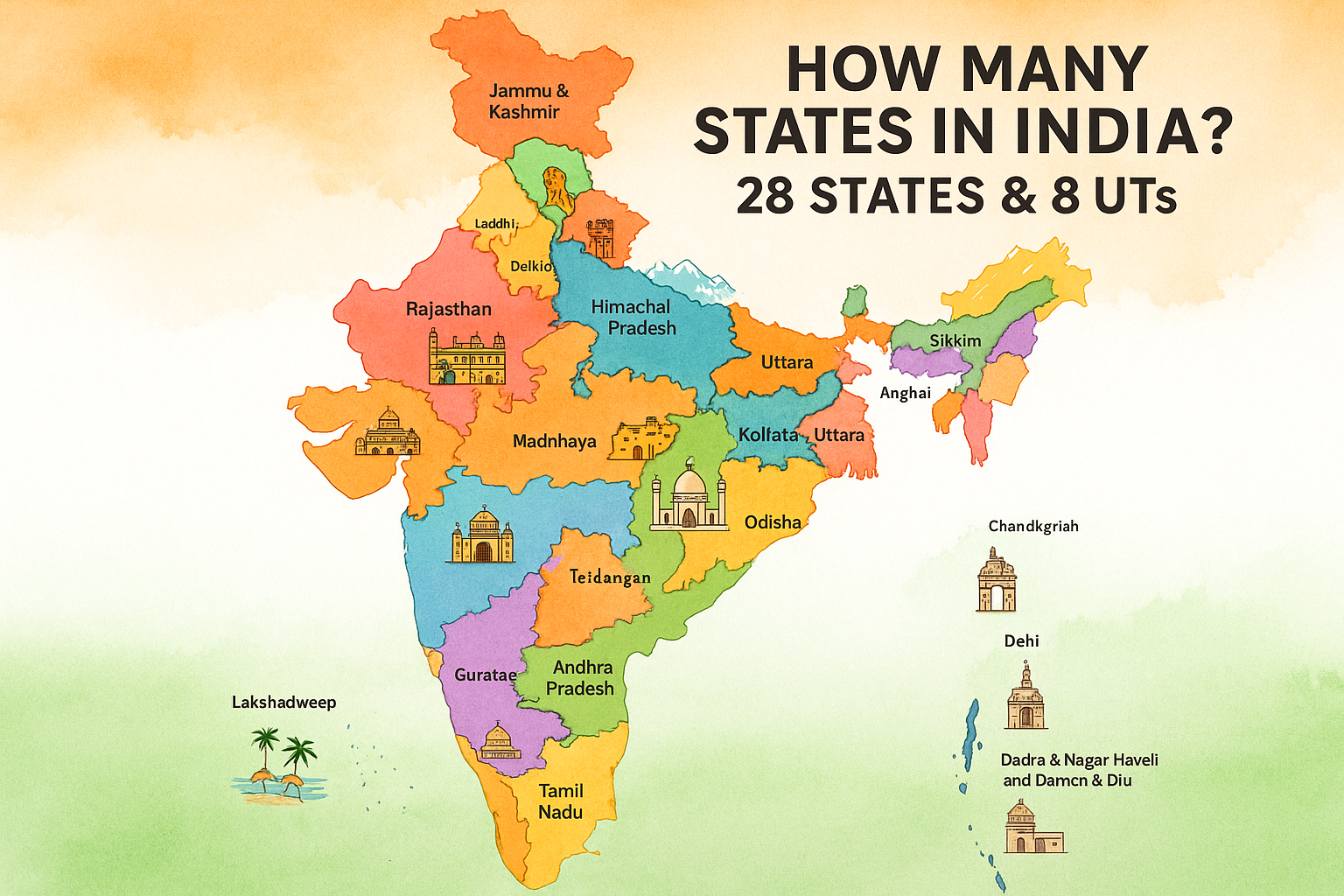
How Many States in India: A Comprehensive Guide to India’s Political Division
How Many States in India, a vibrant tapestry of cultures, languages, and traditions, is administratively divided into 28 states and 8 Union Territories (UTs) as of 20257. This structure reflects the country’s commitment to balancing regional diversity with centralized governance. In this article, we explore the answer to “how many states in India” while delving into their historical evolution, administrative roles, and cultural significance.
How Many States in India: India Has 28 States and 8 Union Territories
The Indian political framework comprises 28 states, each with its own elected government, and 8 Union Territories (UTs), which are governed directly by the central government through administrators appointed by the President of India7. This division ensures efficient governance across the nation’s vast geographical and cultural landscape.
Key Highlights:
-
Largest State: Rajasthan (area-wise).
-
Smallest State: Goa.
-
Most Populous State: Uttar Pradesh.
-
Union Territories: Include Delhi (National Capital Territory), Puducherry, Jammu & Kashmir, Ladakh, and others.
For an official list of states and UTs, visit the National Portal of India.
How Many States in India: Historical Evolution of India’s States
India’s state boundaries have shifted significantly since independence in 1947. Initially, the country had 14 states and 6 UTs. Over decades, linguistic, cultural, and administrative demands led to reorganization. Major milestones include:
-
1956 States Reorganization Act: Created states based on language.
-
2000: Formation of Jharkhand, Chhattisgarh, and Uttarakhand.
-
2019: Jammu & Kashmir was bifurcated into two UTs—J&K and Ladakh7.
These changes highlight India’s adaptive governance model.
States vs. Union Territories: What’s the Difference?
While states enjoy legislative autonomy, Union Territories are governed by the central government. For example:
-
Delhi and Puducherry have partial statehood (elected legislatures).
-
Lakshadweep and Andaman & Nicobar Islands are administered entirely by the central government.
This distinction ensures tailored governance for regions with strategic, cultural, or geopolitical significance.
Cultural Diversity Across India’s States
Each state and UT boasts unique traditions, festivals, and cuisines. For instance:
-
Kerala: Known for its backwaters and Onam festival.
-
Punjab: Celebrates vibrant harvest festivals like Baisakhi.
-
Tamil Nadu: Home to classical dance forms like Bharatanatyam.
Explore more about India’s cultural heritage on the National Portal of India.
Why Does the Number of States Matter?
The count of states and UTs impacts governance, resource allocation, and political representation. Recent debates focus on demands for new states like Gorkhaland or Vidarbha, reflecting India’s dynamic socio-political landscape.
Conclusion: A Nation United in Diversity
Understanding how many states in India offers insight into the country’s administrative genius and cultural richness. From the Himalayas to the Indian Ocean, each region contributes to India’s identity. For authoritative updates, refer to the Government of India’s official portal.



